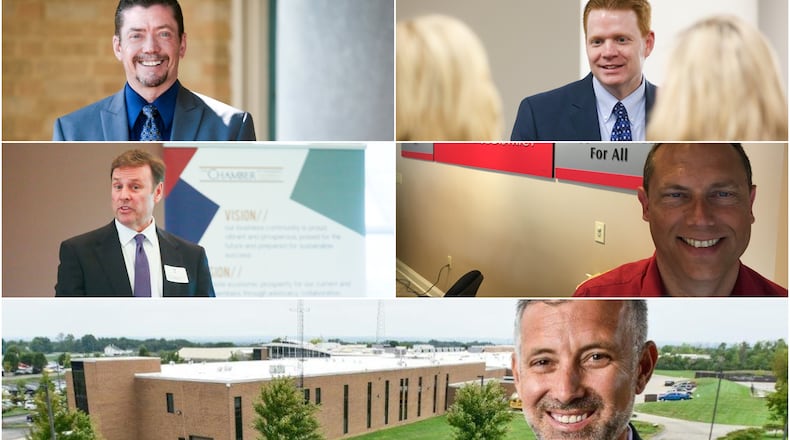In Butler County, nine of its 12 school systems have new district leaders.
In Warren County, five of its 10 school systems have seen new leadership since 2015.
— — —
THE LATEST SUPERINTENDENT MOVES:
New leader named for Warren County Career Center
Middletown Schools leader Sam Ison leaving district
Lakota picks outsider over district veteran for top job
— — —
In all more than 80,000 public and private school students and their families either have seen new superintendents since 2015 or will have by the start of the next school year.
Though no one tracks superintendent turnover across Ohio by county, local and state school officials say their experiences lead them to believe Butler and Warren counties are showing historically high attrition numbers.
Phil Cagwin, superintendent of Butler County’s Monroe Schools since 2012, now looks around and finds himself as one of the few veterans among area superintendents.
“Did I ever think I would be one of the longest-running superintendents in Butler County? No, I never did, and in fact, surprised that I am now,” Cagwin said.
The reasons why vary per superintendent and school system, but an aging leadership class plays a large role as do the growing responsibilities and stress that comes with such jobs, say state school officials.
Across Ohio, says former superintendent Tom Ash — who is now the Buckeye Association of School Administrators governmental relations director — the number of superintendents “leaving their positions is consistent with past years, but the number of retirees is definitely higher.”
Ash said the most recent data available shows that during and at the end of 2015-2016, 125 Ohio superintendents left their positions. Over half of those leaving (64) retired.
“It probably reflects the fact that many of these individuals are in the baby boomer generation and have consequently reached retirement age,” said Ash, whose organization represents public school district leaders statewide.
A PRESSURE COOKER JOB
But being a school district superintendent is also high-stress employment.
Besides answering to thousands of school families as well as business, political and community leaders, superintendents must also follow the dictates of their publicly-elected school boards, which in Butler and Warren counties consist of five members.
According to the American Association of School Administrators, a national organization for school superintendents: The mean tenure for a superintendent is five to six years and the annual turnover rate for superintendents is between 14 percent and 16 percent.
Ash says, “as with the supply of teachers, we find that fewer educators are becoming part of the pool of potential superintendent candidates. The demands of the position make it increasingly less attractive for many educational administrators to leave their current positions and assume the leadership required of a superintendent.”
Superintendent Craig Hockenberry gets that.
The leader of Three Rivers Schools in western Hamilton County says being the leader of a school system means “your popularity swings back and forth.”
Toss in the growing public accountability as measured by an often controversially high amount of state-ordered, standardized testing — which are the main measurements used for annual state report cards — and “there are now very high expectations” for the job, says Hockenberry.
And then add in the factor of school board membership turnover, which can occur every two years in the election cycle and at times may radically alter the make-up of the five-member board that first hired a superintendent.
A nearly universal intermediate step to a superintendent’s job is holding a school building principal position. There, said Hockenberry, “you can make a mistake, but you usually have an opportunity to make it right.”
“But when you are a superintendent and you make a bad decision, there are very few opportunities to correct it,” he said.
Sean McCauley, University of Cincinnati assistant professor in the school’s Department of Educational Leadership, has trained principals that went on to become superintendents and is also a veteran observer of public education in Southwest Ohio.
“The stress on superintendents is crazy. It’s not that they don’t love the work, but it just wears on you after a while,” McCauley said.
And regardless of the best intentions of school boards and new leaders, changing district leadership causes “a pause in a district” and McCauley said if the turnover trend continues it could hinder school districts from meeting their goals.
“If you are always stopping and starting with new leadership, it’s tough to get where you want to be,” he said.
— — —
MORE RECENT SUPERINTENDENT MOVES:
— — —
Download the free Journal-News app, Butler County’s #1 source for local news
About the Author
